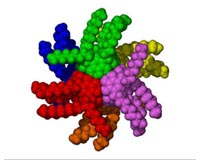 |
Den Haag, Netherlands (SPX) Jul 17, 2009 The research programme Towards Biosolar Cells has been granted a budget of 25 million euros by the Dutch Government. The Ministry of Agriculture, Nature and Food Quality recommended the programme because it will contribute to green energy, improve food supplies and a create a more sustainable biomass. The research focuses on increasing the efficiency of sunlight conversion into energy and building materials in plants and algae through photosynthesis. Part of the programme will involve the development of so-called artificial leaves. The programme involves six universities, three leading institutes, 30 companies, a higher vocational education institute and the Netherlands Organisation for Scientific Research (NWO). In addition to research it will include extra educational activities for students in secondary and higher education to raise the profile of scientific research into photosynthesis. As oil, coal and gas become increasingly scarce, there is a growing need for energy alternatives and products made from petroleum such as plastic. Our economy needs to become less dependent on fossil fuels, which is why the Dutch Government has chosen to develop alternatives to achieve its aims for a biobased economy. The sun supplies as much energy every hour as the entire world population consumes in a year. Plants have a refined system for storing energy in fibres and nutrients. Increasing our understanding of that process should enable us to produce energy ourselves or improve the conversion of sunlight and make new products. The programme is also of major social importance because of its potential to provide both food and sustainable energy. Towards Biosolar Cells has three main goals: + To increase the photosynthetic efficiency of plants, resulting in more biomass and higher energy yields per given surface area, (for instance with more, larger or heavier plants). + Direct production of fuels and to bypass the biomass phase. Possible outcomes include photosynthetic cyanobacteria or algae that produce butanol (a form of alcohol that can be used as biofuel). + To combine natural and technological components to create solar collectors that supply fuel rather than electricity. The initiators are six universities that will combine their international expertise in the field of photosynthesis, biophysics, biochemistry, bionanotechnology, genomics and physiology. Thirty participating companies form an innovative mix of start-ups, SMEs and large corporations in the energy sector, algae production and plant breeding. In addition to the research element, another aspect focuses on education on photosynthesis. Projects will be organised at universities, higher vocational education facilities and secondary schools to increase students' interest in scientific developments related to photosynthesis. Towards Biosolar Cells will ensure that the Netherlands will continue to play a leading role in this sector. The research programme is unique in its scientific challenge and social and economic impact in a new and innovative domain. The global interest in this research area is also growing. Within Europe the European Science Foundation is pressing for more attention to be paid to this field, while US President Obama explicitly mentioned artificial photosynthesis in an extra impulse programme for sustainable energy. Share This Article With Planet Earth
Related Links Netherlands Organisation for Scientific Research (NWO) Powering The World in the 21st Century at Energy-Daily.com
 New Geothermal Heat Extraction Process To Deliver Clean Power Generation
New Geothermal Heat Extraction Process To Deliver Clean Power GenerationRichland WA (SPX) Jul 17, 2009 A new method for capturing significantly more heat from low-temperature geothermal resources holds promise for generating virtually pollution-free electrical energy. Scientists at the Department of Energy's Pacific Northwest National Laboratory will determine if their innovative approach can safely and economically extract and convert heat from vast untapped geothermal resources. The goal ... read more |
|
| The content herein, unless otherwise known to be public domain, are Copyright 1995-2009 - SpaceDaily. AFP and UPI Wire Stories are copyright Agence France-Presse and United Press International. ESA Portal Reports are copyright European Space Agency. All NASA sourced material is public domain. Additional copyrights may apply in whole or part to other bona fide parties. Advertising does not imply endorsement,agreement or approval of any opinions, statements or information provided by SpaceDaily on any Web page published or hosted by SpaceDaily. Privacy Statement |